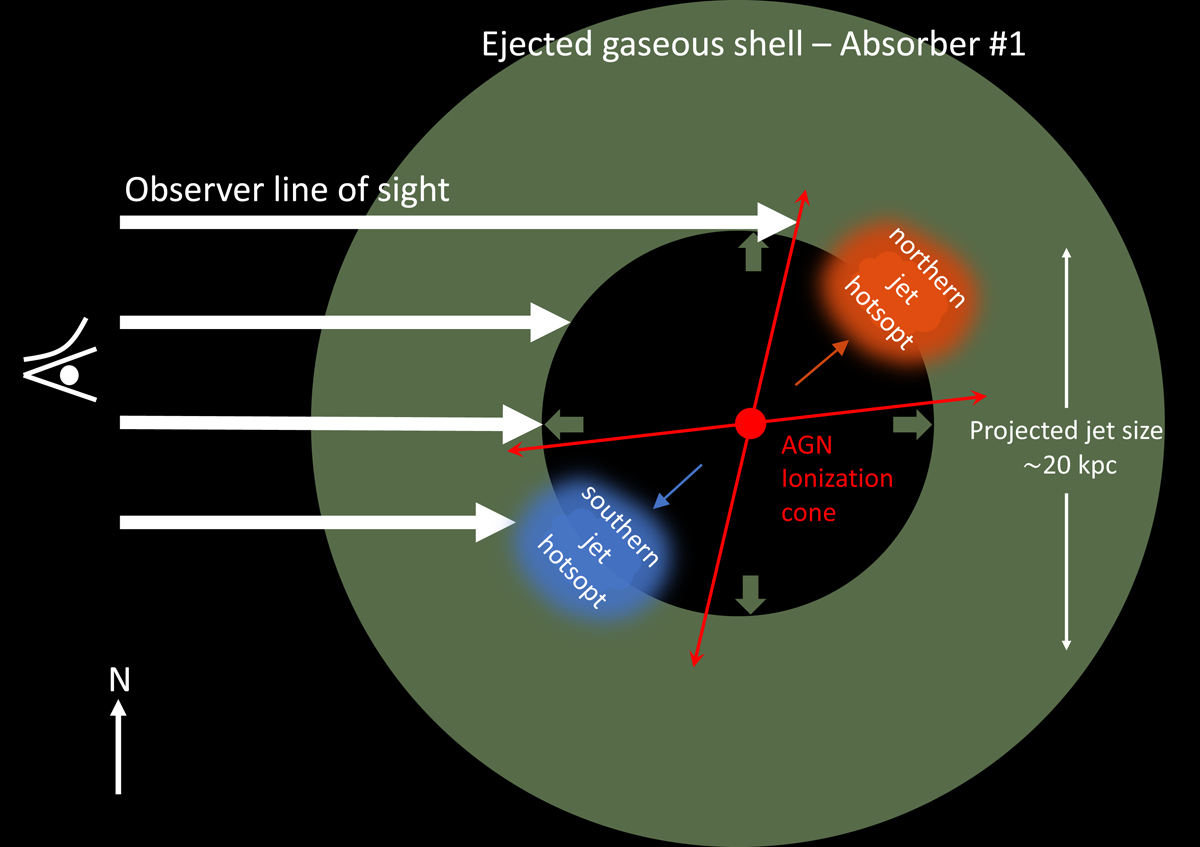Fig. 12.

Download original image
Schematic view of the proposed outflowing shell model in Sect. 7.1. The large dark green annulus represents the outflowing gaseous shell that could be the absorbing cloud of absorber #1. The blue and orange regions mark the southern (approaching) and northern (receding) jet hotspot interacting with the previous ejected shell, respectively. We note that the morphology of the gaseous shell is not necessarily in a circular shell as shown here, and we do not have information for the shell at the backside of the AGN. The red lines in the annulus center indicate the region of the AGN ionization cone that could have a wider opening angle than the jet beam (see text). The column density gradient we observed in Sect. 5.1 in the S-N (SW-NE, due to the orientation on the sky plane, which is not shown here) direction could simply be explained by the different lengths of the observer line of sight intersecting with the gaseous shell at different spatial locations (see text). This process is shown with the length of white arrows intersecting with the dark green annulus in the figure. For the column density decreasing after passing the midplane, which cannot be explained by the geometry setting, the southern jet (blue region) interaction with the ejected gaseous shell could cause the decreasing of column density through instabilities and/or partially ionizing the gas. Though the rough projection size of the jet is shown, we note that other parts of this sketch are not to scale.
Current usage metrics show cumulative count of Article Views (full-text article views including HTML views, PDF and ePub downloads, according to the available data) and Abstracts Views on Vision4Press platform.
Data correspond to usage on the plateform after 2015. The current usage metrics is available 48-96 hours after online publication and is updated daily on week days.
Initial download of the metrics may take a while.


